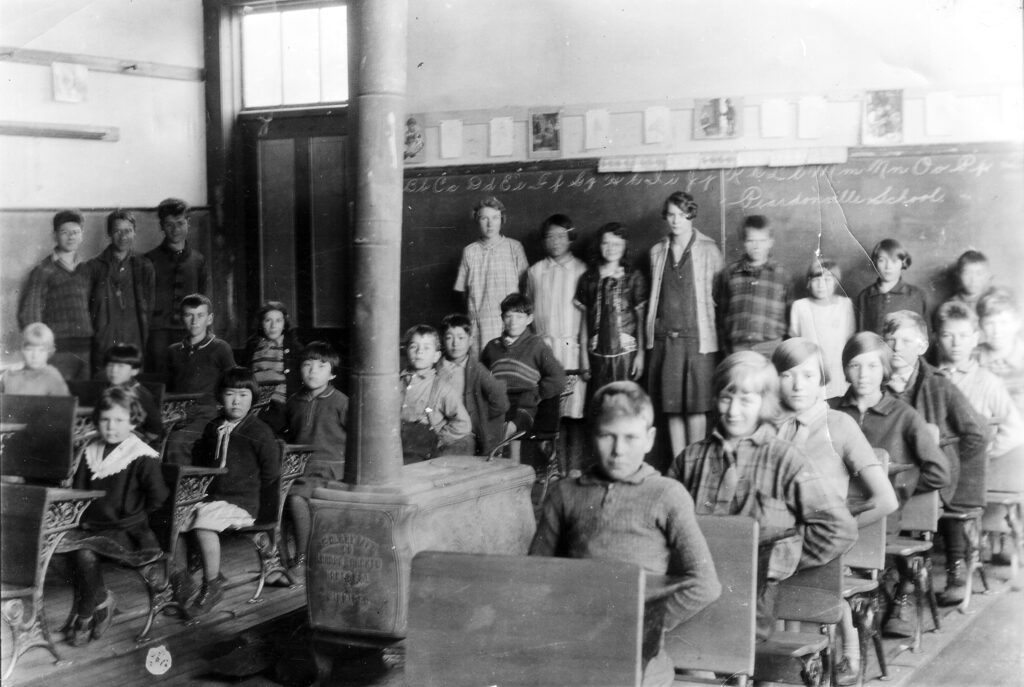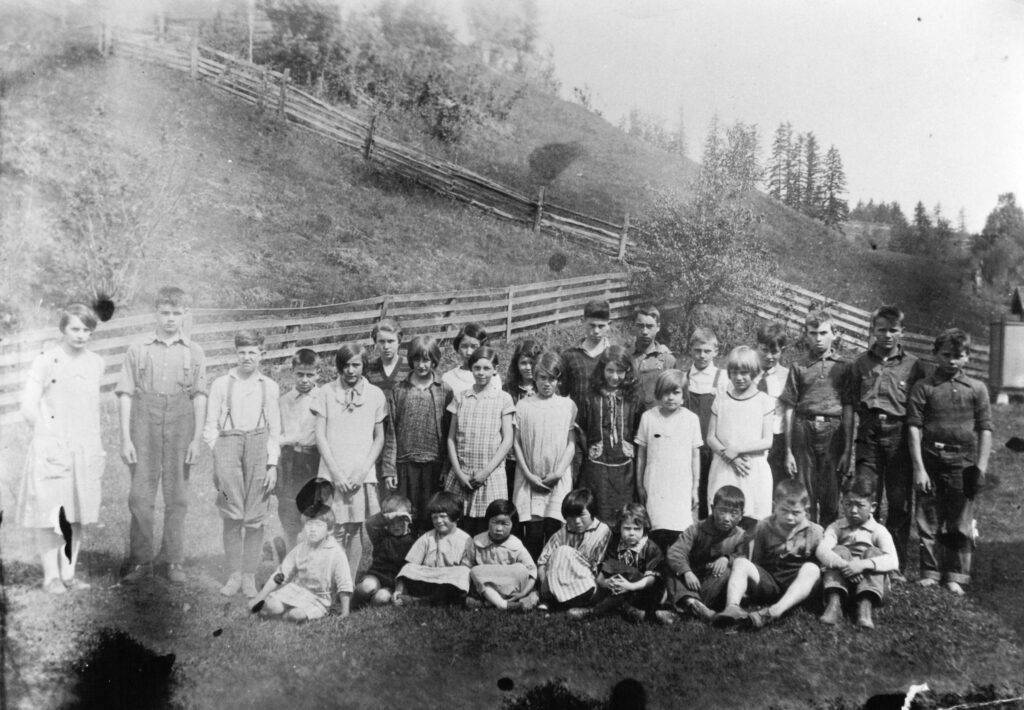
Richard and Ella Peardon for whom the town was named after, donated an acre of land for the one-room schoolhouse and in 1896, Ida Bowman became the first teacher of 21 pupils.[1] In 1906 a larger schoolhouse was built and like the Japanese Languages Schools, was mostly funded through community events; in this case dances and concerts.[2] Mention is made of the larger Japanese Canadian communities in recollections such as receiving “a specially wrapped gift and a small bag of candy with an orange donated by the Japanese families in the area” at Christmas time.[3]
Una M. R. Peardon, who taught from 1928-1929 recalls that one day after returning to the school after lunch she “found no children around” and upon entering the classroom saw that at the front of the classroom before their peers sitting nicely in at their desks were “two small Japanese children teaching all the others how to use chopsticks. Of course, there was much laughter from the children. When, after fumbling with their chopsticks and almost winning, the chopsticks refused to cooperate and down they went. I smiled at them all and said to keep on with their lesson, as I too would love to be able to make those chopsticks work.”[4] Una Peardon, while failing to mention the Japanese children’s names, provides a window into a lighthearted incident and friendly atmosphere as seen through the eyes of one teacher.

A student of Peardonville School in the 1940s, named Joan Prasloski, recalls that:
For us as children, the Japanese were our friends and we never worried about them. We were delighted with their generosity, their special treats of oranges and strawberries at school ‘socials’. From the community point of view, we could not see that they constituted the slightest threat to national security, in fact, as far as we were concerned, there was great trust and certainly great positive interaction between the whites and the Japanese in our school. Everyone was subjected to great anxiety when the families left the district. . . I am certain that we who are the survivors of that time, can only declare our loyalty to our Japanese friends and offer regret that the war necessitated this complete disorganization of their way of living. . . We don’t actually remember when the Japanese children were actually sent away. We don’t remember saying goodbye to them. We do not know the personal stories of the Japanese friends: Haraga, Kiwana, Yonimitsu, Oka, and Tanaka families. We do know that these great people, whom we lived with from the earliest times, were good friends and good settlers.[5]
The book Peardonville Remembered: 1887-1992 does not include the recollections of Japanese Canadian students themselves so the understanding of these “great positive interactions” is one-sided, but the good memories and close relationship Joan Prasloski and others had with their peers shows a deep level of respect and friendship.
[1] Peter and Betty Friesen et al. Peardonville Remembered: 1887-1992 (Abbotsford: Spectra Office Systems, 1992), 18-19.
[2] Friesen et al., 20.
[3] Friesen et al., 21.
[4] Friesen et al., 30-31.
[5] Friesen et al., 12-13.